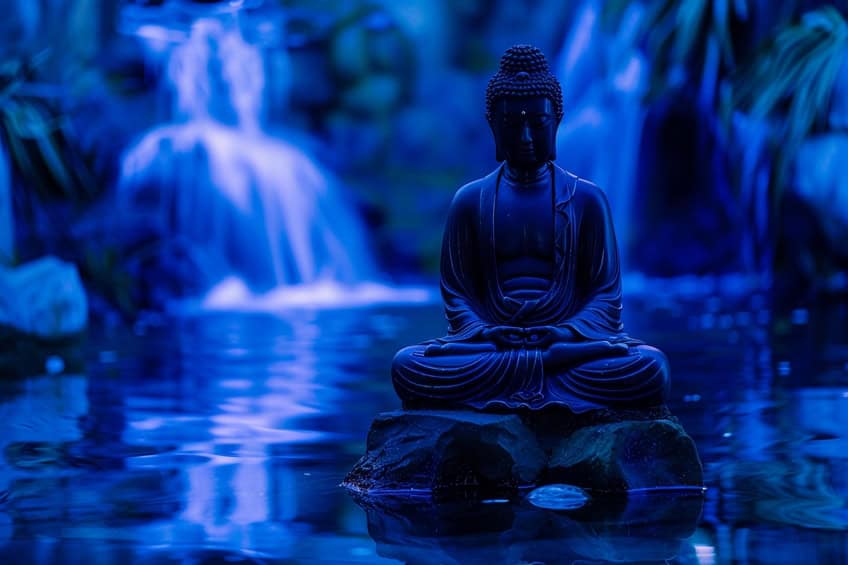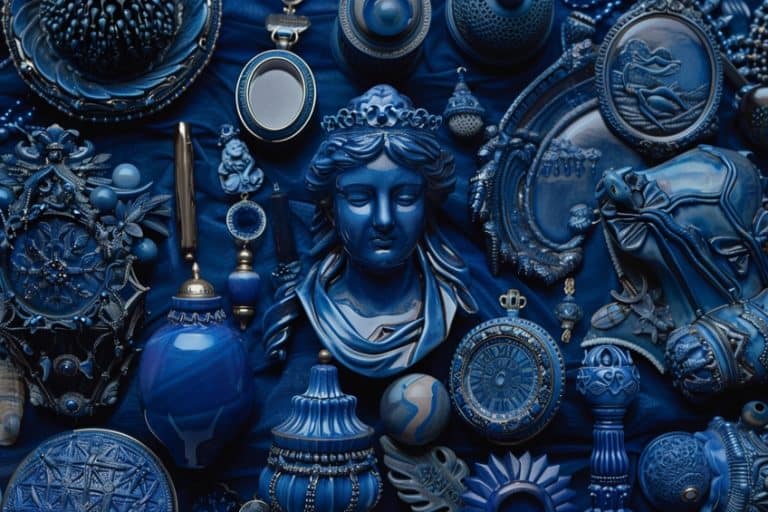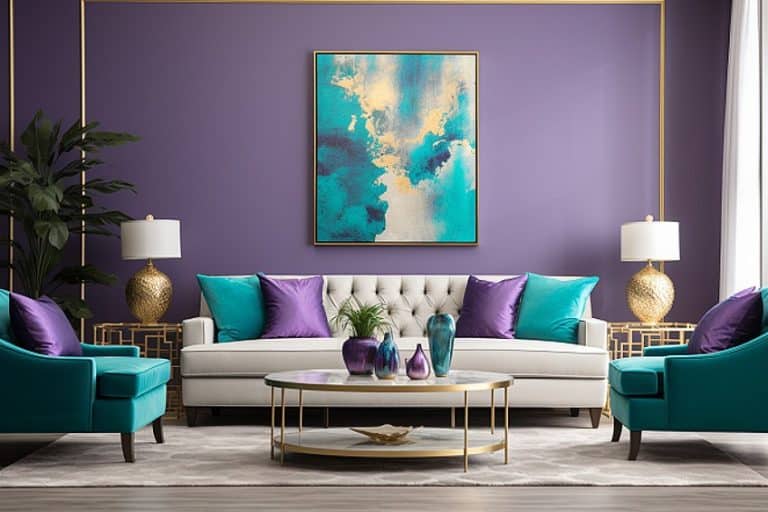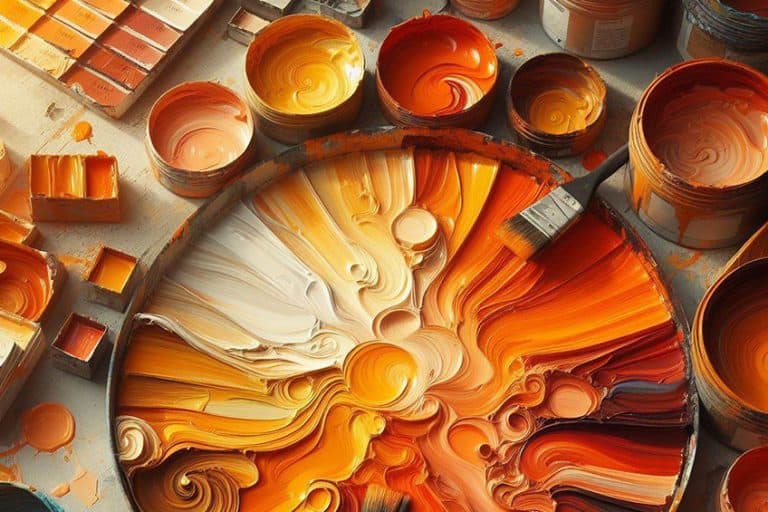Meaning of the Color Dark Blue – Interpreting Its Cultural Context
Welcome to the intriguing world of dark blue! As a color theory expert, delving into the depths of this rich hue is like embarking on a voyage through midnight skies and deep ocean mysteries. Dark blue isn’t just a color; it’s a symbol of calm authority, profound introspection, and the enigmatic allure of the unknown. Join me as we unravel the hidden meanings and captivating nuances of this timeless shade, from its artistic symbolism to its psychological impact on our emotions and perceptions. Get ready to dive deep into the mesmerizing realm of dark blue!
Key Takeaways
- Dark blue signifies calmness, stability, and depth.
- Historically, it represents authority and professionalism.
- In design, it’s a versatile alternative to black with broad applications.
Cultural and Historical Significance
| Shade | Hex Code | CMYK Color Code (%) | RGB Color Code | Color |
| Dark Blue | #00008B | 100, 88, 0, 45 | 0, 0, 139 |
Dark blue, a color teeming with depth and sophistication, carries a multitude of meanings across various contexts. As one of the most versatile colors in the palette, it is laden with connotations of calmness, tranquility, and stability. This shade has been adeptly employed in numerous fields ranging from art and design to fashion and corporate branding, underscoring its broad appeal and symbolic versatility.
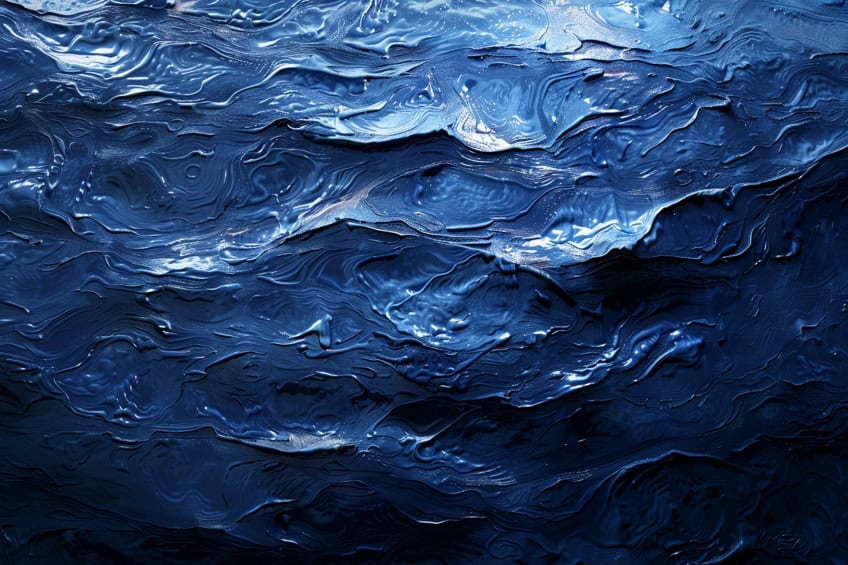
In cultural and historical contexts, dark blue has often been associated with authority, expertise, and reliability. It has a storied presence in military uniforms and business suits, signifying strength and professionalism. The color is not just a symbol of power; it also conveys feelings of introspection and mystery.
Its appeal is further broadened in design, where it serves as a more colorful alternative to black, offering designers a rich, somber shade that retains color while adding visual weight.
The Dark Blue Color
Dark blue is traditionally linked with a sense of authority and power. In modern contexts, it is still used to convey a sense of stability and confidence. For example, the color is commonly found in the uniforms of the navy and in corporate logos, signaling trust and professionalism.
Global Symbolism
Globally, dark blue is often associated with spirituality and the higher realms. Many cultures see it as a symbol representing wisdom, introspection, and a deeper understanding of the universe. The night sky, often depicted in dark blue, is frequently seen as a connection to the spiritual world.

- Ancient Egypt: Here, the creation of the first synthetic blue pigment, known as Egyptian blue, demonstrates the value and reverence for this color. It was believed to provide protection and was associated with the divine.
- Western societies: In these cultures, dark blue denotes royalty, nobility, and high social status. It’s a color often found in traditional religious garments and artifacts as a representation of importance and tradition.
Historical Use in Cultures
Throughout history, dark blue’s rarity and difficulty to produce made it a symbol of significance and exclusivity in ancient cultures.
- Religion: In religious contexts, the color is viewed as sacred and used in various rituals and sacred art.
- Culture and tradition: Traditional use in cultural garments, art, and decorations has been a way of denoting importance and conveying cultural stories.
- History of pigments: The historical significance is also evident in the development of pigments. Dark blue pigments were so prized that ancient societies went to great lengths to produce and obtain them, signifying their value in historical art and cultural artifacts.
The Meaning of the Color Dark Blue
Dark blue, encompassing shades from navy to midnight blue, is often considered a color of depth and stability. It carries with it a sense of sophistication and seriousness.
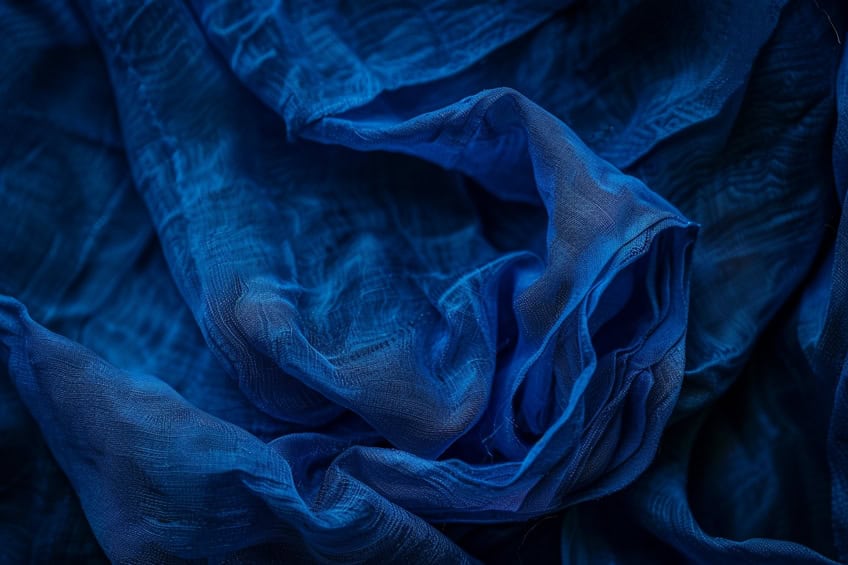
Positive Associations
- Authority and trust: Dark blue is frequently linked with authority, signifying expertise and trustworthiness. It is a color often chosen by institutions and corporations to convey reliability and responsibility.
- Calmness and reflection: This hue promotes serenity and introspection, making it a preferred color in settings that aim for tranquility and focus, such as academic institutions or therapeutic spaces.
Negative Associations
- Coldness and detachment: Sometimes, dark blue can be perceived as too formal or impersonal, creating a sense of distance or coldness.
- Melancholy: In some cultural contexts, the deep tone of dark blue is associated with sadness or melancholy, potentially evoking a subdued mood.

Color Associations and Symbolism
The color dark blue conjures a rich tapestry of symbolic associations, ranging from the psychological impact on emotions to its pervasive presence in the natural environment.
Emotional and Psychological Associations
Dark blue is intimately linked with trust and reliability, often used by institutions and companies to cultivate an image of stability and dependability. In the realm of emotion, it evokes a sense of calmness and serenity, contributing to its widespread use in environments designed for relaxation and healing. The hue’s depth mirrors the human penchant for introspection and contemplation, channeling a tranquil vibe that influences both the mind and the physiological aspects of the body.
- Trust: Frequently connected with honesty, loyalty, and integrity.
- Calmness and serenity: Invites a peaceful mental state, reducing stress and promoting tranquility.
- Relaxation: Slows down the metabolism and is believed to help regulate heartbeat and breathing.
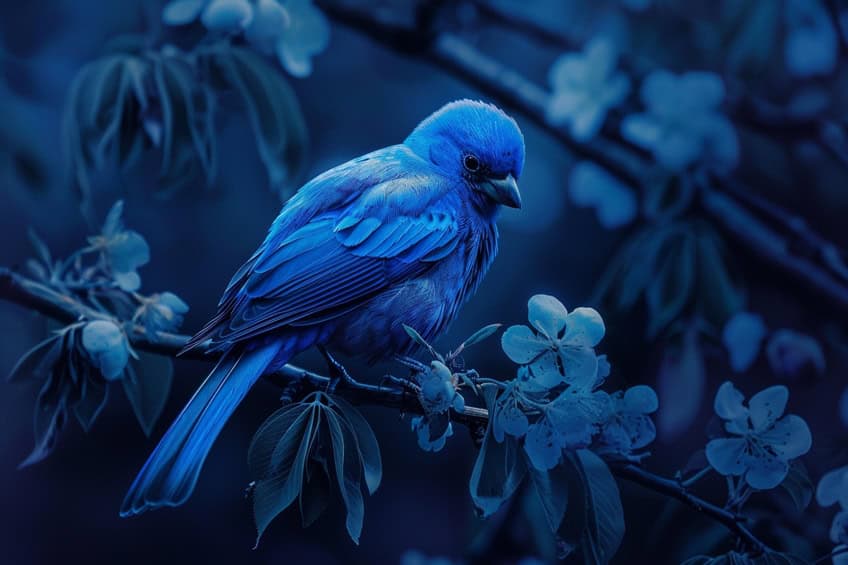
Blue in Nature and Environment
In nature, dark blue is omnipresent, from the depths of the ocean to the expansive sky. Its association with the sea and the sky renders it a symbol for openness and infinite possibility. The environment resonates with the color’s tranquil and peaceful essence, where its presence is often a marker of serenity in an otherwise chaotic world.
- Sea and ocean: Represents the vastness and depth of the world’s waters.
- Sky: Symbolizes the limitlessness of the space overhead.
- Nature: Dark blue’s occurrence in the environment often signifies stability and a form of cold, quietude.
By exploring dark blue within both emotional resonance and the environment, one can understand its profound influence on human perception and its place within the world’s natural palette.
Aesthetic and Design Applications
Dark blue is a versatile color that can convey sophistication and authority. Its countless design and aesthetic applications span from fashion to web design, making it a staple for creators and marketers alike.

Dark Blue in Fashion
Dark blue, particularly in the shade of navy blue, is a fundamental color in the fashion industry due to its timeless elegance. Navy blue suits are a symbol of professionalism and are often chosen for their slimming effect and versatility in pairing with other colors.
In casual wear, dark blue jeans provide a foundational garment that complements a wide range of styles and colors.
Usage in Branding and Marketing
In branding and marketing, dark blue is leveraged to instill confidence and trust. Many financial institutions and corporate entities employ navy blue in their logos and marketing materials to project reliability and expertise. The color’s association with authority also lends itself well to companies aiming to emphasize their leadership and stability in their respective industries.

Interior and Web Design Relevance
The impact of dark blue extends to interior and web design, where it is used to create both a calming ambiance and a sense of depth. Interior designers often use dark blue accents for a touch of sophistication, while web designers might employ navy blue as a background color to reduce strain on the eyes and to make other elements stand out.
Artwork featuring dark blue tones can add a focal point to a room or website, tying together aesthetics with an undercurrent of artistry.
Practical Implications and Uses
Dark blue is a color imbued with depth and sophistication, often selected for its psychological impacts in both business environments and spiritual practices. Its applications range from branding and corporate identity to meditative and therapeutic settings.

Influence in Business and Communication
In professional settings, dark blue is synonymous with responsibility and dependability. Companies adopt dark blue in logos and uniforms to elicit feelings of trustworthiness and commitment. Here’s how dark blue colors the world of business and communication:
- Corporate identity: Renowned for its association with intelligence and professionalism, dark blue is a staple for business suits and uniforms, projecting an air of authority and expertise.
- Branding: As a color that evokes loyalty and confidence, it is frequently utilized by financial institutions and law firms to strengthen their image of trust and stability.
Spiritual and Healing Contexts
Beyond the boardroom, dark blue transcends into the realms of spirituality and healing. Its deeper hues are believed to encourage introspection and wisdom, making it a poignant choice for the following:
- Therapeutic environments: Dark blue’s calming properties are leveraged in spaces designed for relaxation and meditation, offering a sense of serenity and focus.
- Spiritual symbolism: It is often associated with the night sky and the vast ocean, symbolizing the search for truth and higher knowledge, and is thought to facilitate spiritual awareness and awakening.
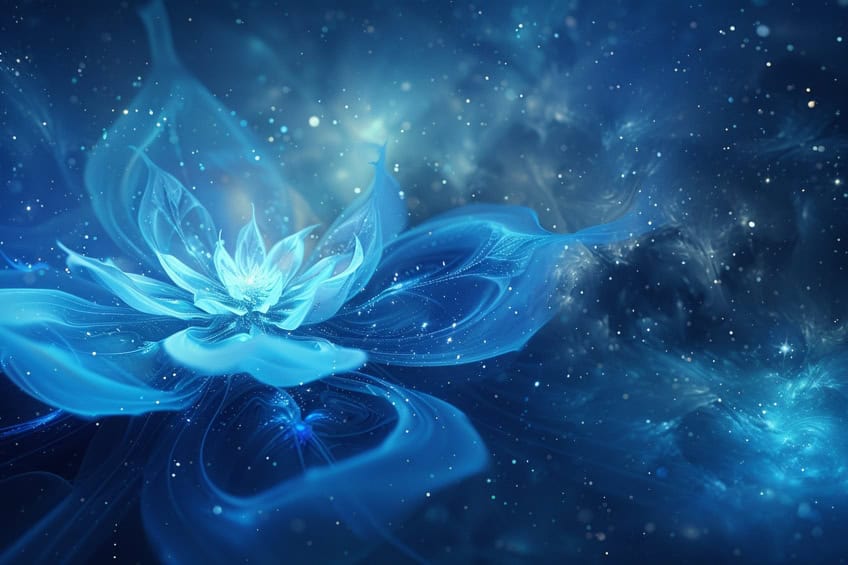
As we conclude our exploration of dark blue, it’s clear that this color holds a fascinating array of meanings and impacts. From its calming influence on our minds to its associations with trustworthiness and depth, dark blue leaves an indelible mark on our experiences and perceptions. Whether it’s the serene skies above or the vast oceans below, dark blue reminds us of the profound beauty and mystery that colors our world. So, next time you encounter this enchanting hue, let it inspire you to embrace tranquility, wisdom, and the endless possibilities that lie within the depths of your imagination.
Frequently Asked Questions
What Symbolism Is Associated With Dark Blue in Various Cultures?
In various cultures, dark blue symbolizes wisdom, trust, and spirituality. It is often linked to the night sky or deep waters, embodying introspection and serenity. Many belief systems see dark blue as a gateway to the spiritual realm, and it can represent loyalty and intelligence as well.
How Is Dark Blue Perceived in Terms of Personality Traits and Characteristics?
Dark blue is perceived as signifying trustworthiness, expertise, and confidence. It is a color often associated with professionalism and authority, making it popular for business attire and uniforms. Its association with calmness and stability also suggests a personality that values consistency and reliability.
What Emotions Are Typically Evoked by the Color Dark Blue?
The color dark blue can evoke a range of emotions including tranquility, serenity, and sometimes sadness. Its calming effect is widely recognized, offering a sense of peace. However, because it is a cool and deep color, it can also be seen as aloof or unfeeling, potentially resulting in feelings of distance or melancholy.
Isabella studied at the University of Cape Town in South Africa and graduated with a Bachelor of Arts majoring in English Literature & Language and Psychology. Throughout her undergraduate years, she took Art History as an additional subject and absolutely loved it. Building on from her art history knowledge that began in high school, art has always been a particular area of fascination for her. From learning about artworks previously unknown to her, or sharpening her existing understanding of specific works, the ability to continue learning within this interesting sphere excites her greatly.
Her focal points of interest in art history encompass profiling specific artists and art movements, as it is these areas where she is able to really dig deep into the rich narrative of the art world. Additionally, she particularly enjoys exploring the different artistic styles of the 20th century, as well as the important impact that female artists have had on the development of art history.
Learn more about Isabella Meyer and the Art in Context Team.
Cite this Article
Isabella, Meyer, “Meaning of the Color Dark Blue – Interpreting Its Cultural Context.” Art in Context. May 14, 2024. URL: https://artincontext.org/meaning-of-the-color-dark-blue/
Meyer, I. (2024, 14 May). Meaning of the Color Dark Blue – Interpreting Its Cultural Context. Art in Context. https://artincontext.org/meaning-of-the-color-dark-blue/
Meyer, Isabella. “Meaning of the Color Dark Blue – Interpreting Its Cultural Context.” Art in Context, May 14, 2024. https://artincontext.org/meaning-of-the-color-dark-blue/.


